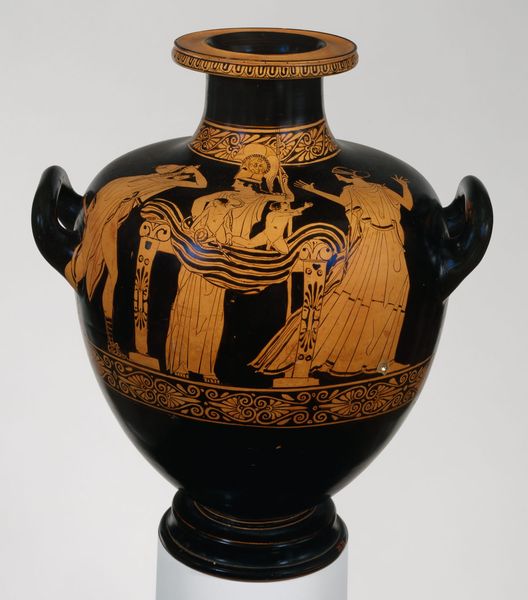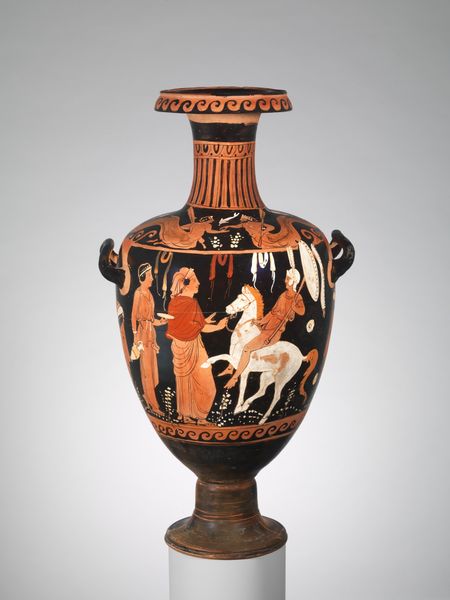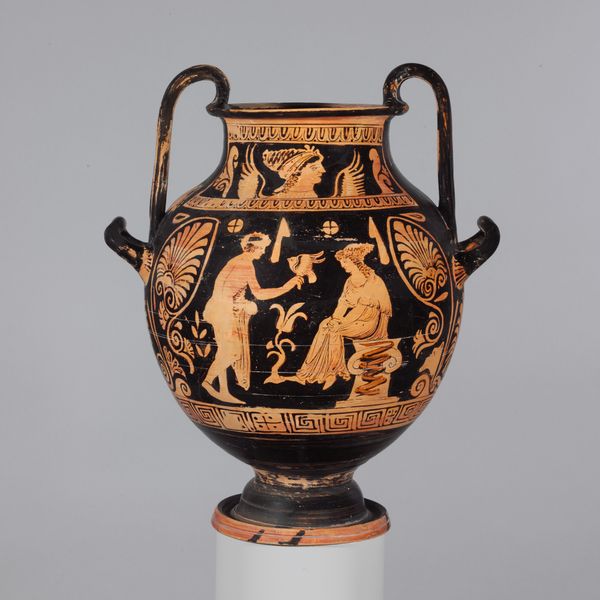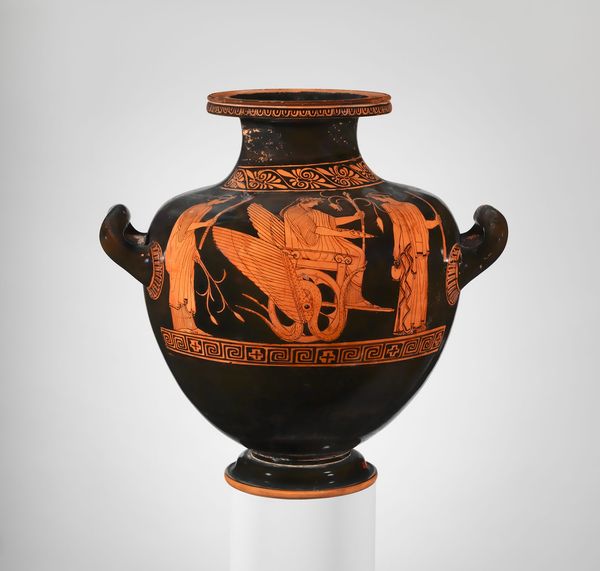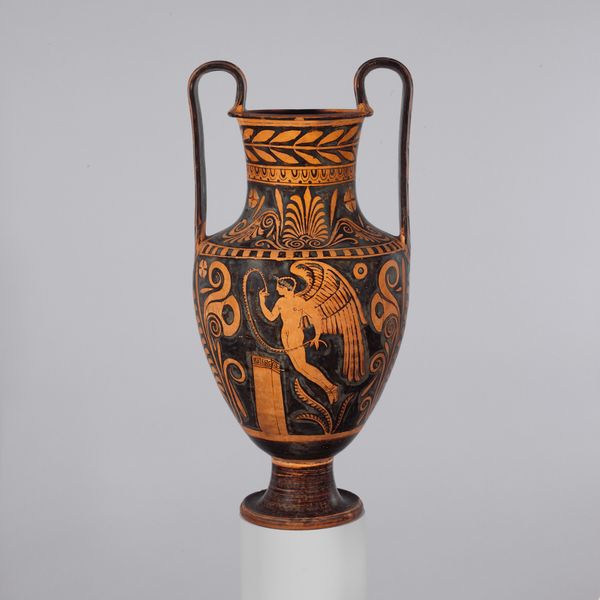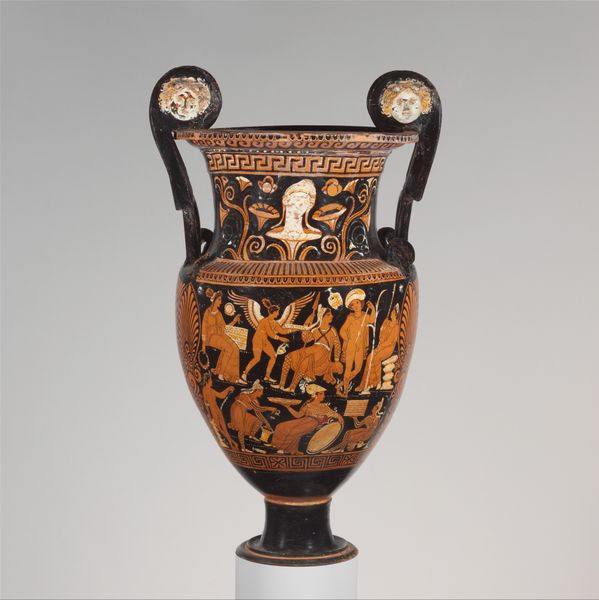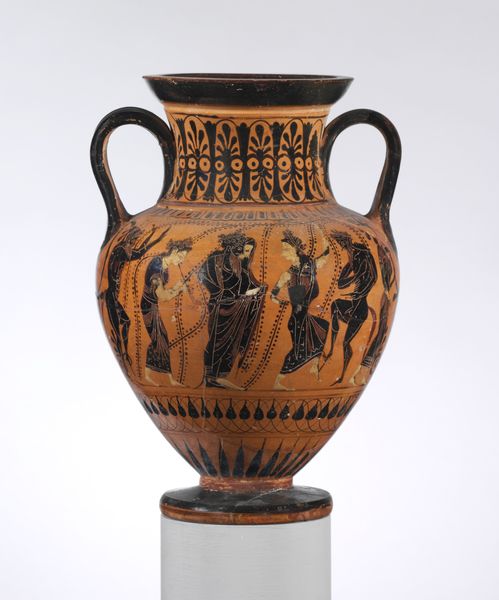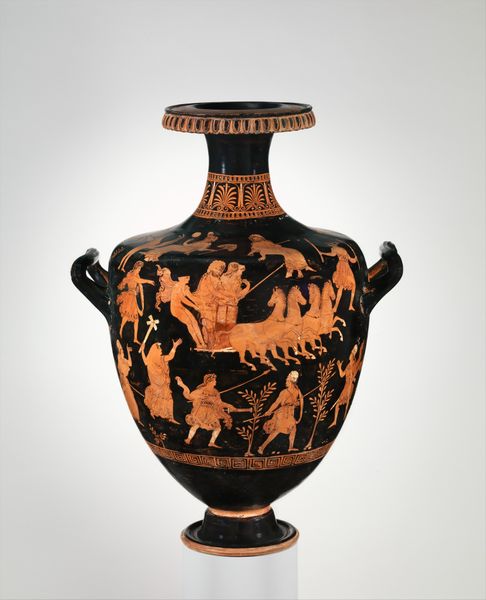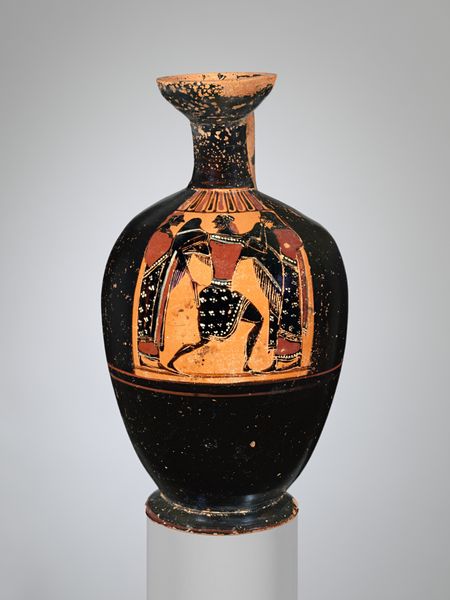
Terracotta Hydria (Water Jug) c. 320
0:00
0:00
ceramic, terracotta
#
narrative-art
#
greek-and-roman-art
#
ceramic
#
figuration
#
ceramic
#
genre-painting
#
terracotta
#
italy
Dimensions: 25 1/2 x 17 1/2 x 13 3/8 in. (64.77 x 44.45 x 33.97 cm)
Copyright: Public Domain
Editor: So this is a terracotta hydria, a water jug, created around 320 BCE and attributed to the White Sakkos Painter. I'm really struck by how dynamic the figures are, even though they’re painted in such a classical style. What do you see when you look at this piece? Curator: Beyond the purely aesthetic, I see a snapshot of Athenian social rituals. These vessels, while functional, were heavily invested with socio-political meaning. How was water access controlled, and who controlled it? Depictions of women, like the ones on the hydria, tell us how gender and class factored into daily life. Consider, for example, how pottery like this played a vital role in public life but its creation and use were, ironically, usually not recorded in formal histories. What is represented in this vase’s register seems significant to social rituals but perhaps not worth formally recording by officials or historians, maybe because it was considered gendered as female labor. Editor: That's a really interesting point. So you’re saying that objects like this can give us a glimpse into everyday life and even social dynamics that formal historical records might have missed? Curator: Precisely! Art becomes a powerful lens to explore broader social structures and power dynamics that shaped ancient Athens. Think of it as an informal archive of cultural practices. Are there any details that you find particularly suggestive? Editor: Well, the figure in the top register is seated. Does this imply a kind of special importance or perhaps elevate her social class? Also, who do you think was consuming images and narratives like this on everyday objects like this water jug? Curator: Excellent question. These images may be consumed and circulated among women, since they’re at the well anyway. This can provide an outlet for self-affirmation and creating and solidifying group identification. Now I’m wondering if men were actively shut out from knowing these mythologies as depicted. It shows how cultural messaging and visual vocabulary help forge cultural relationships, social structures and networks. Editor: It's amazing to think about how a water jug could be such a rich source of information about social and cultural history. I'll never look at pottery the same way again! Curator: And I’ll definitely be contemplating this hydria’s circulation within the city and among the genders in Athenian society!

